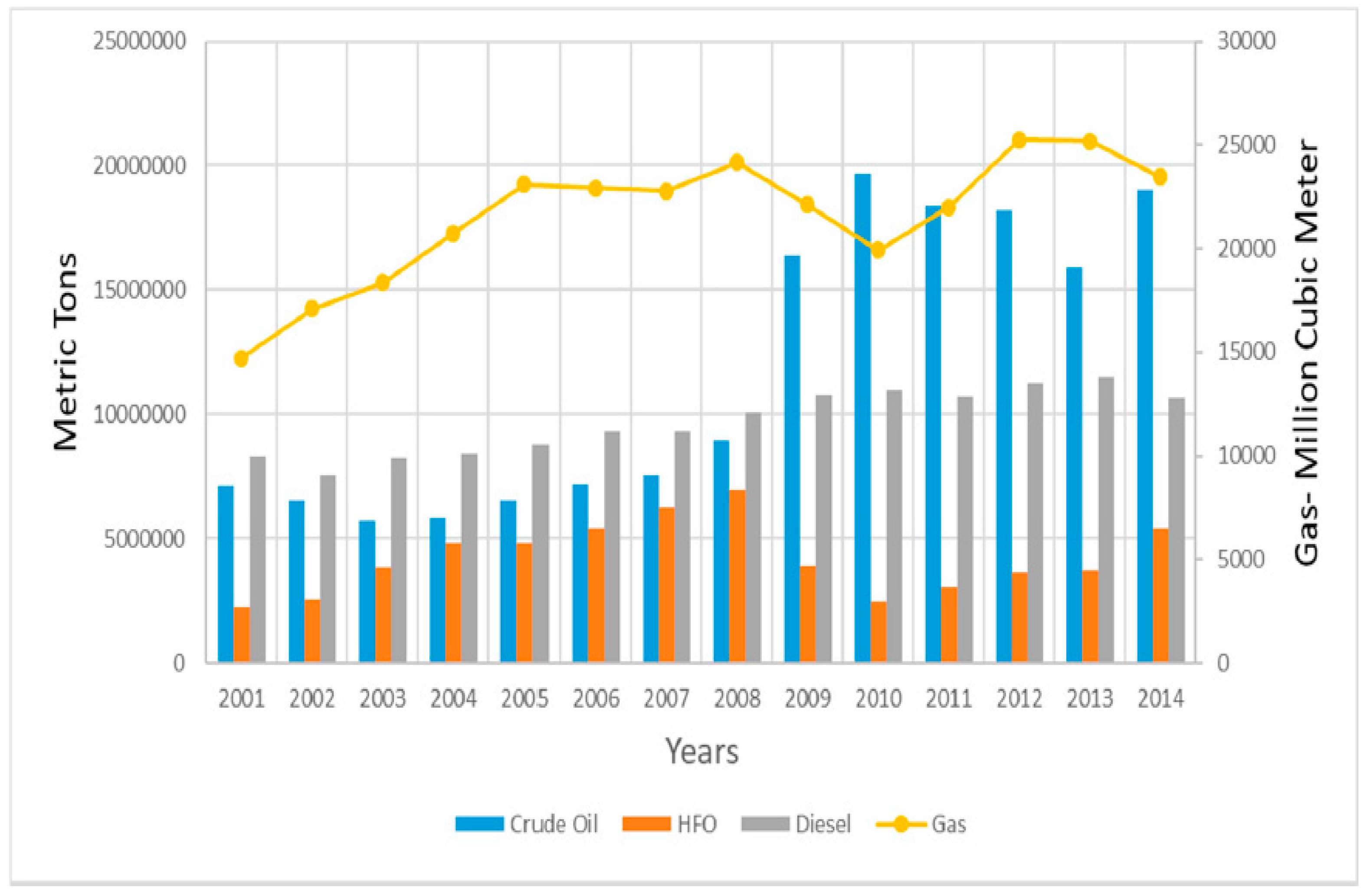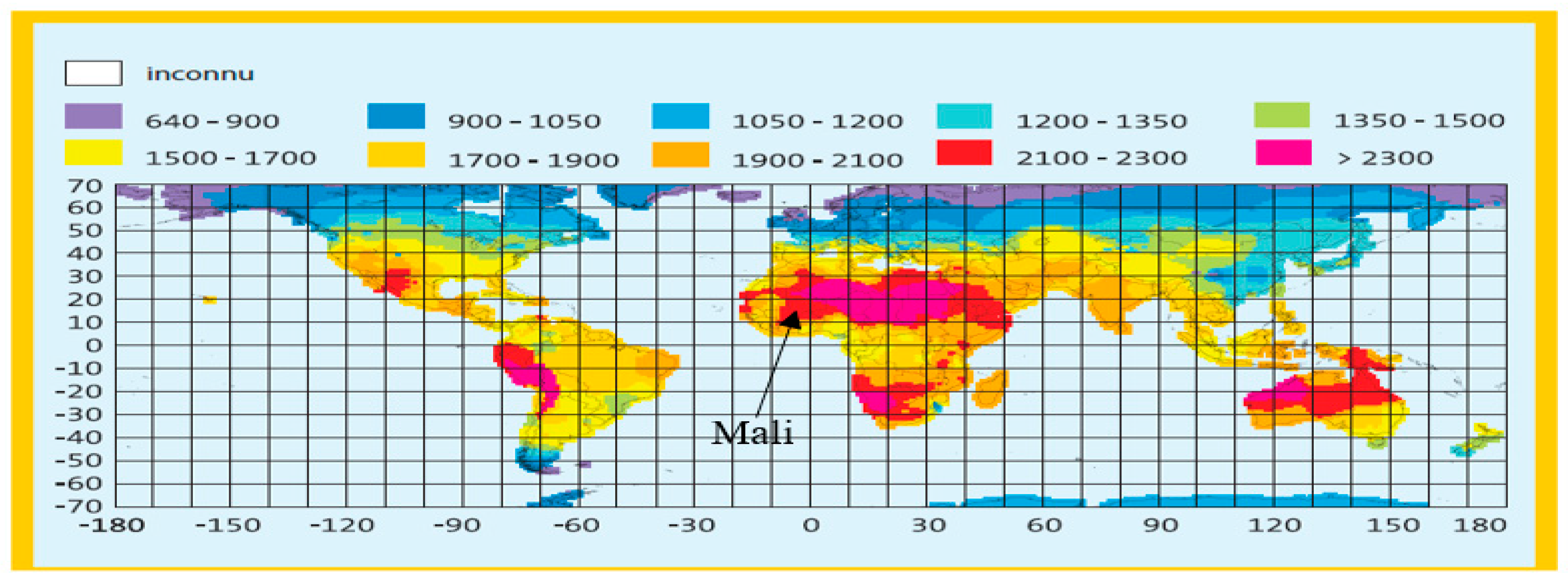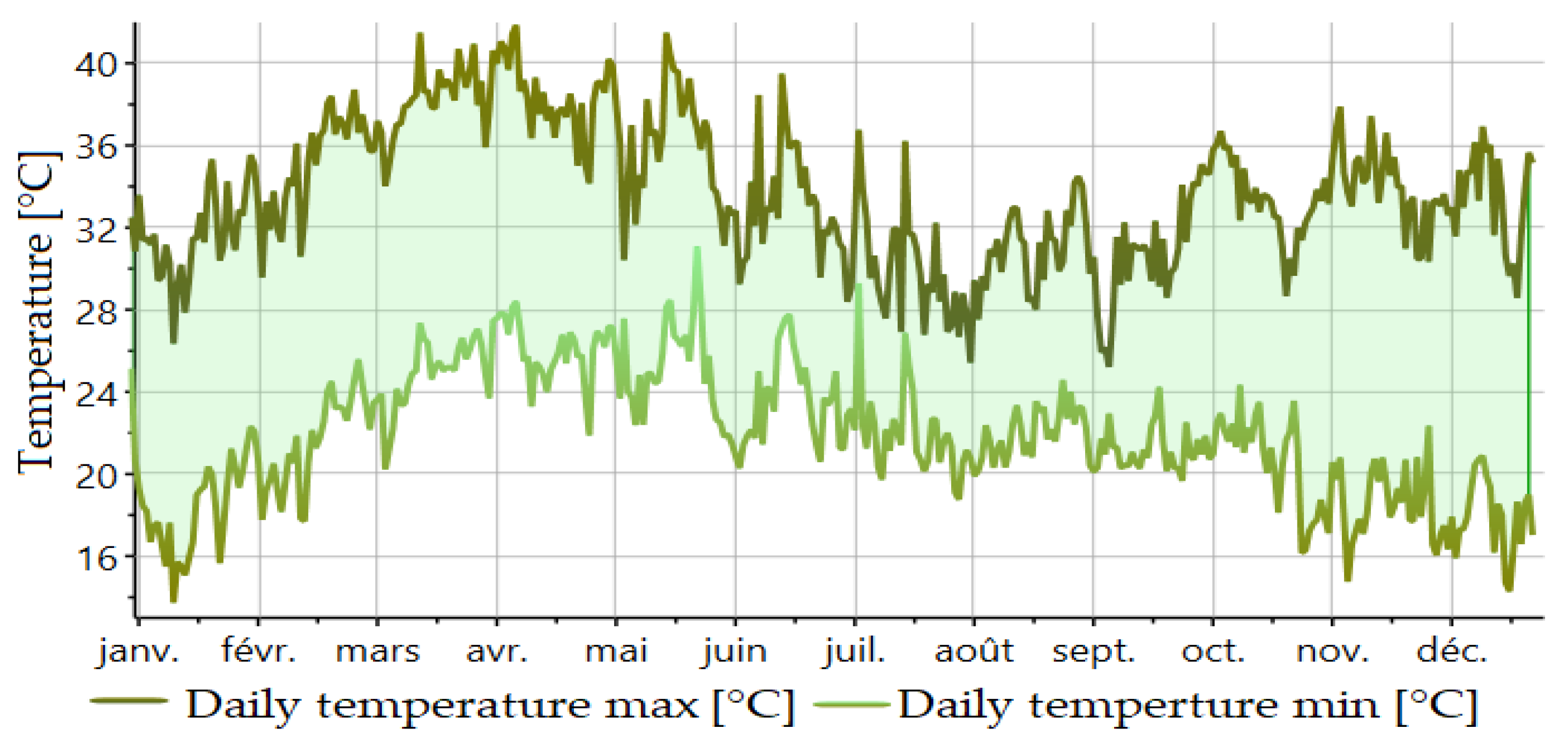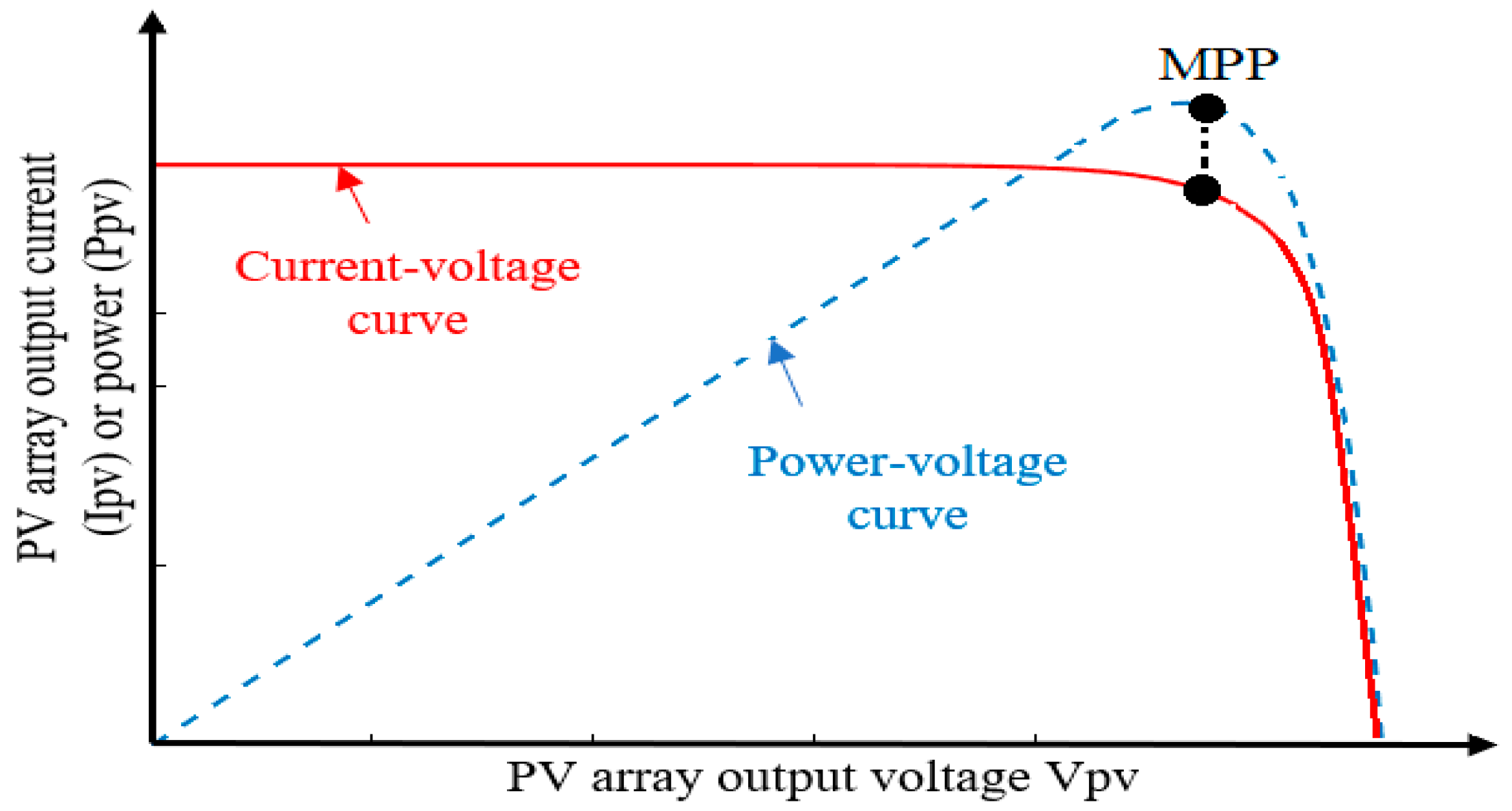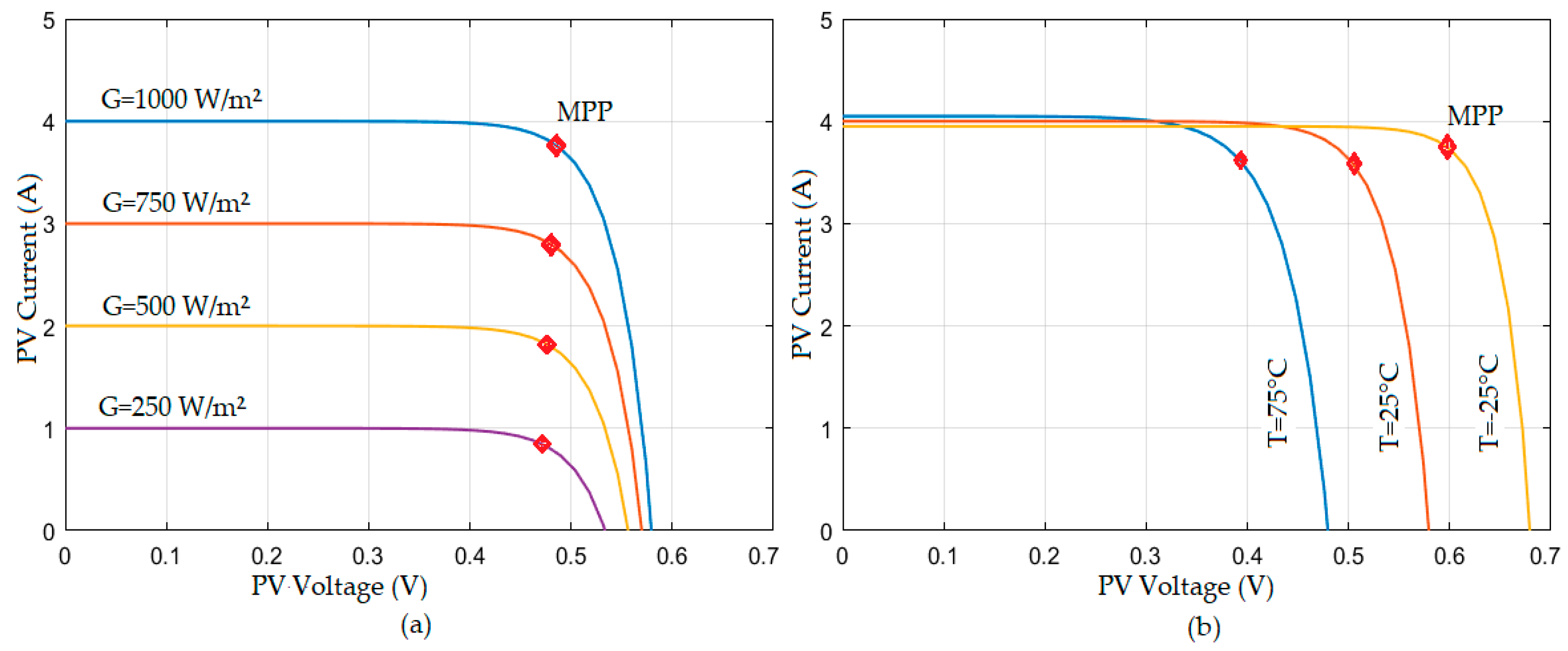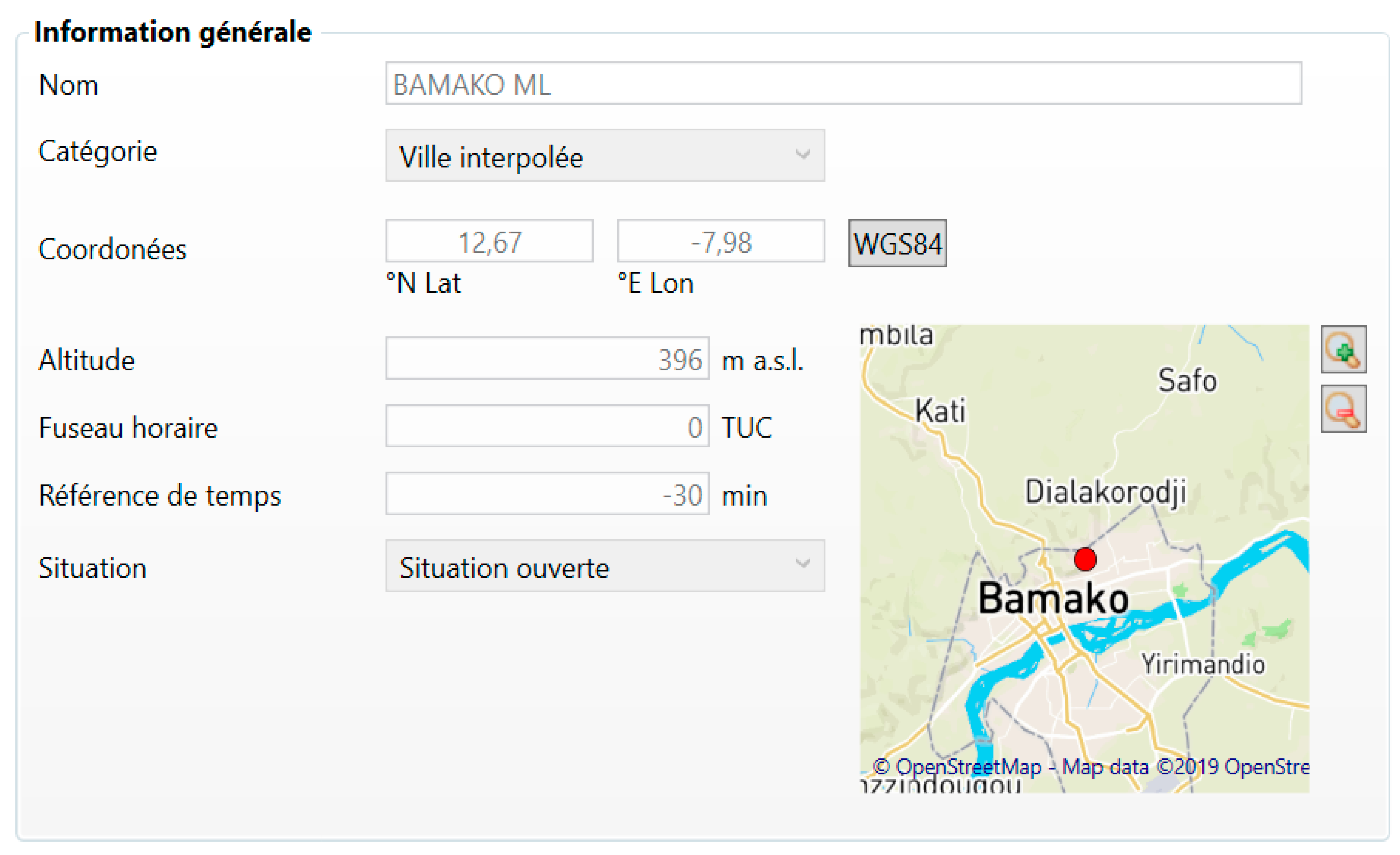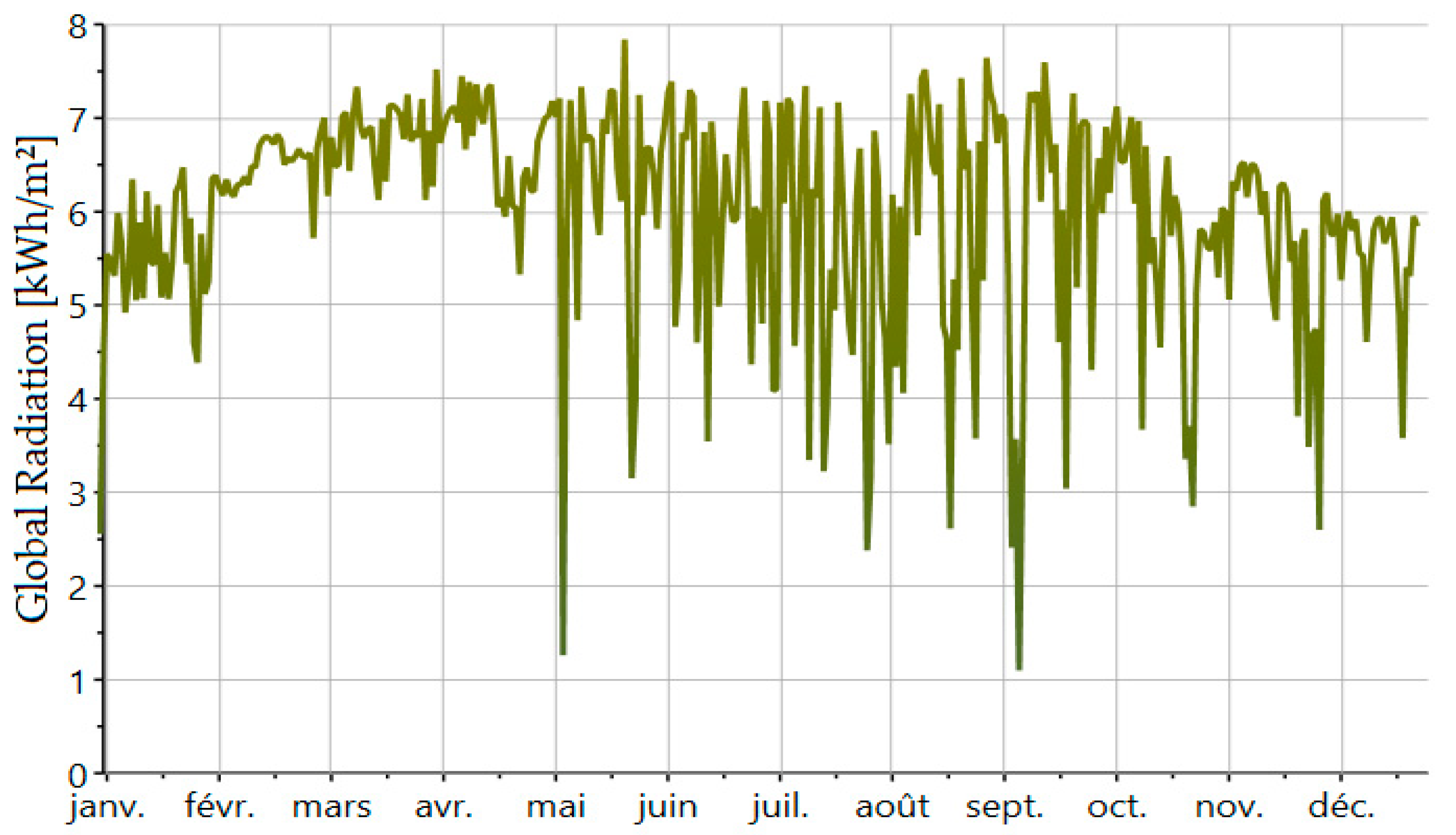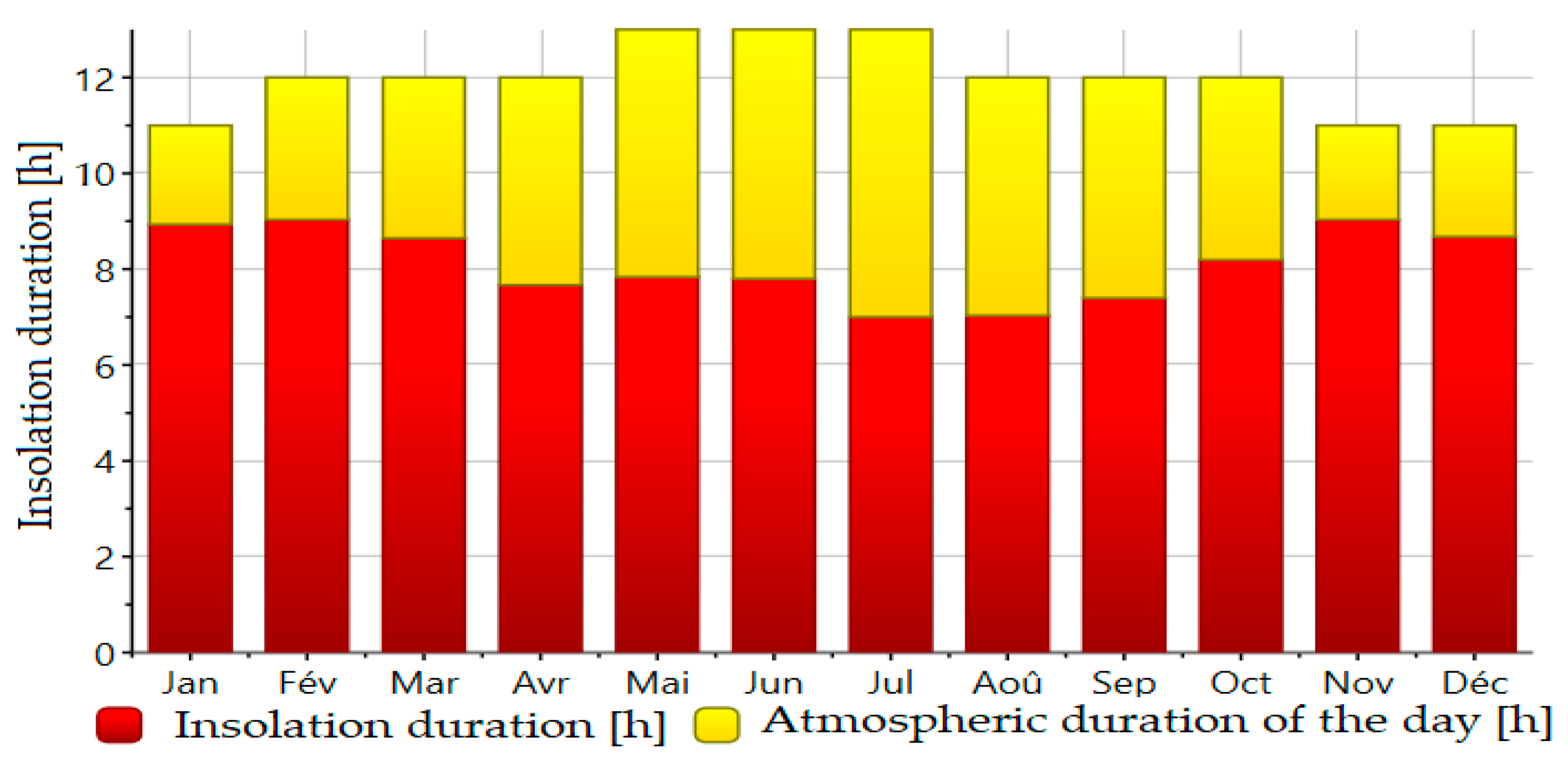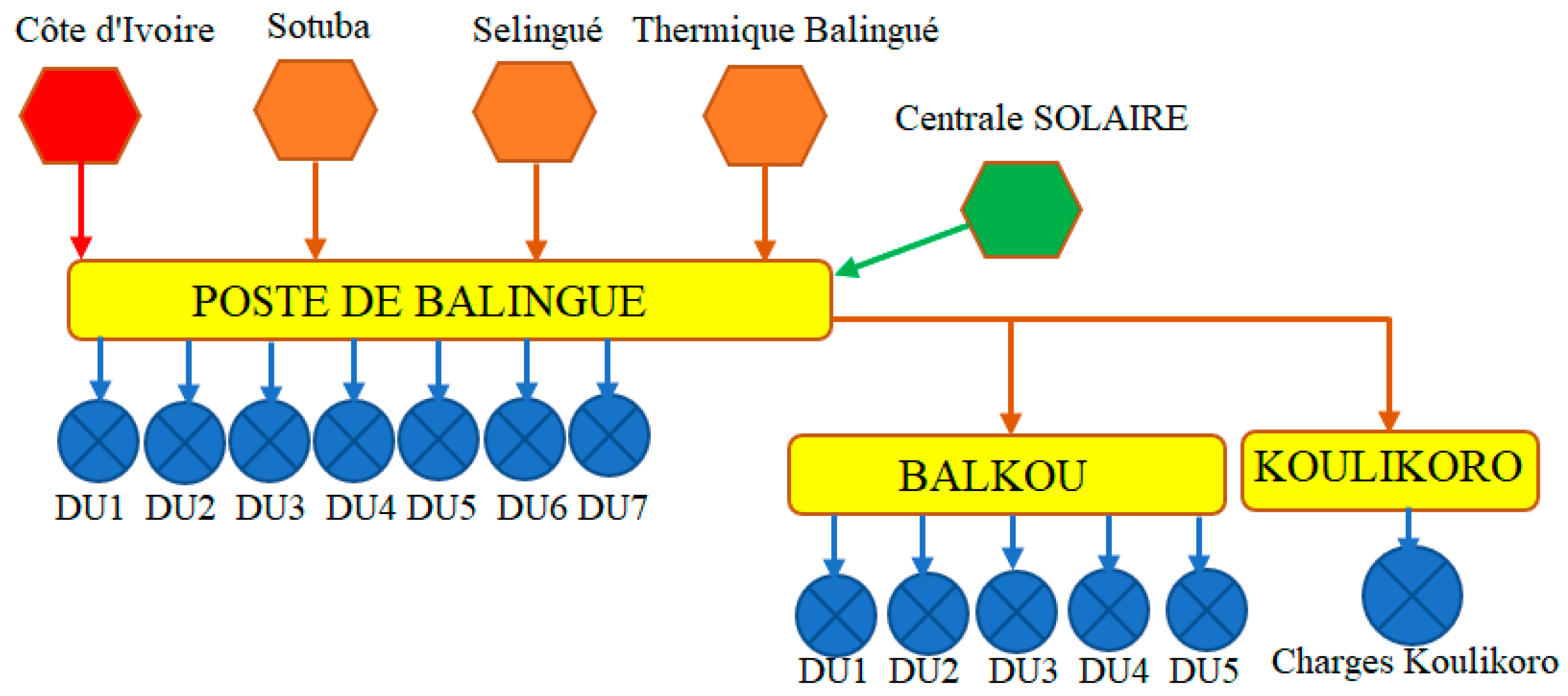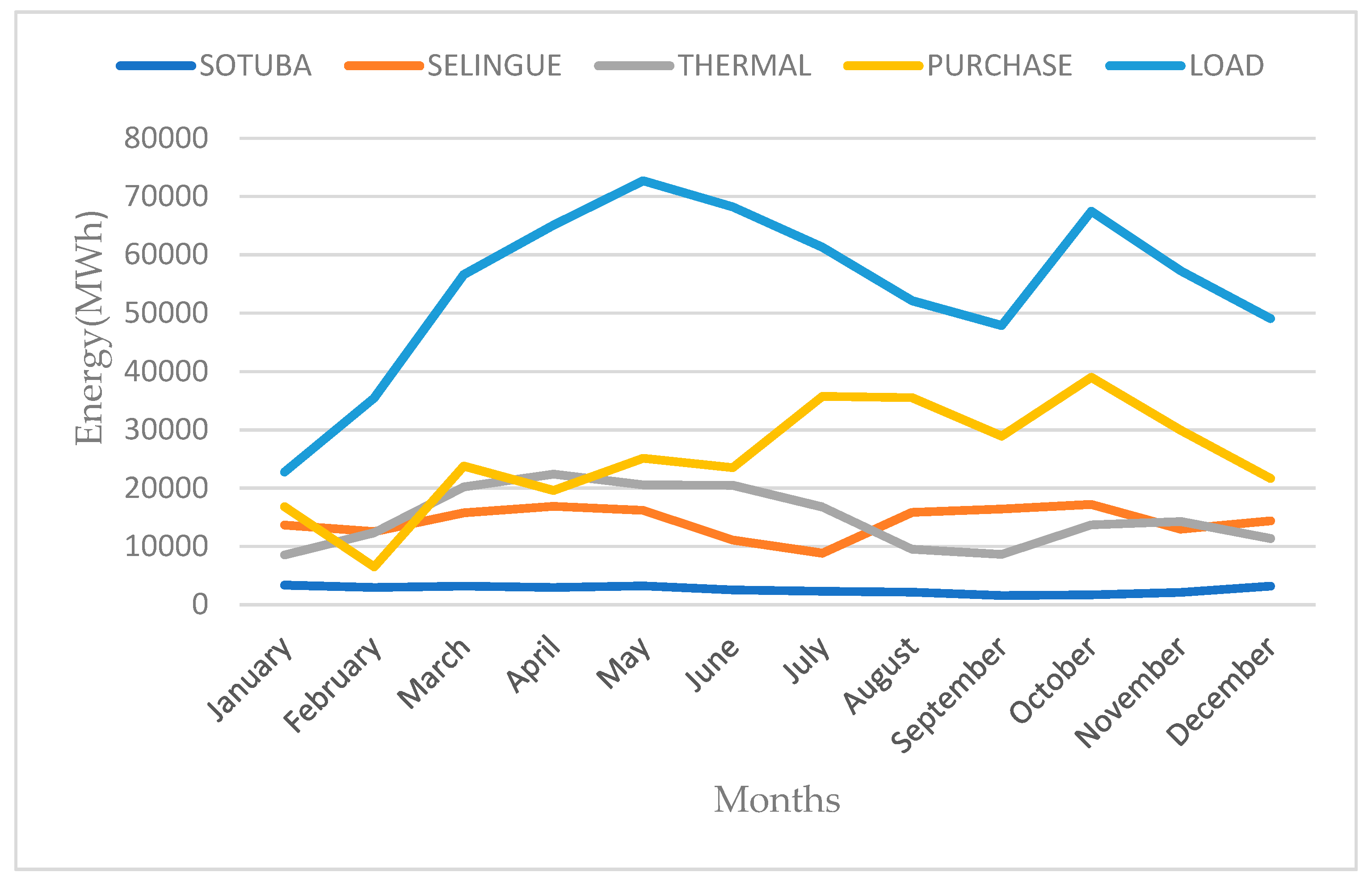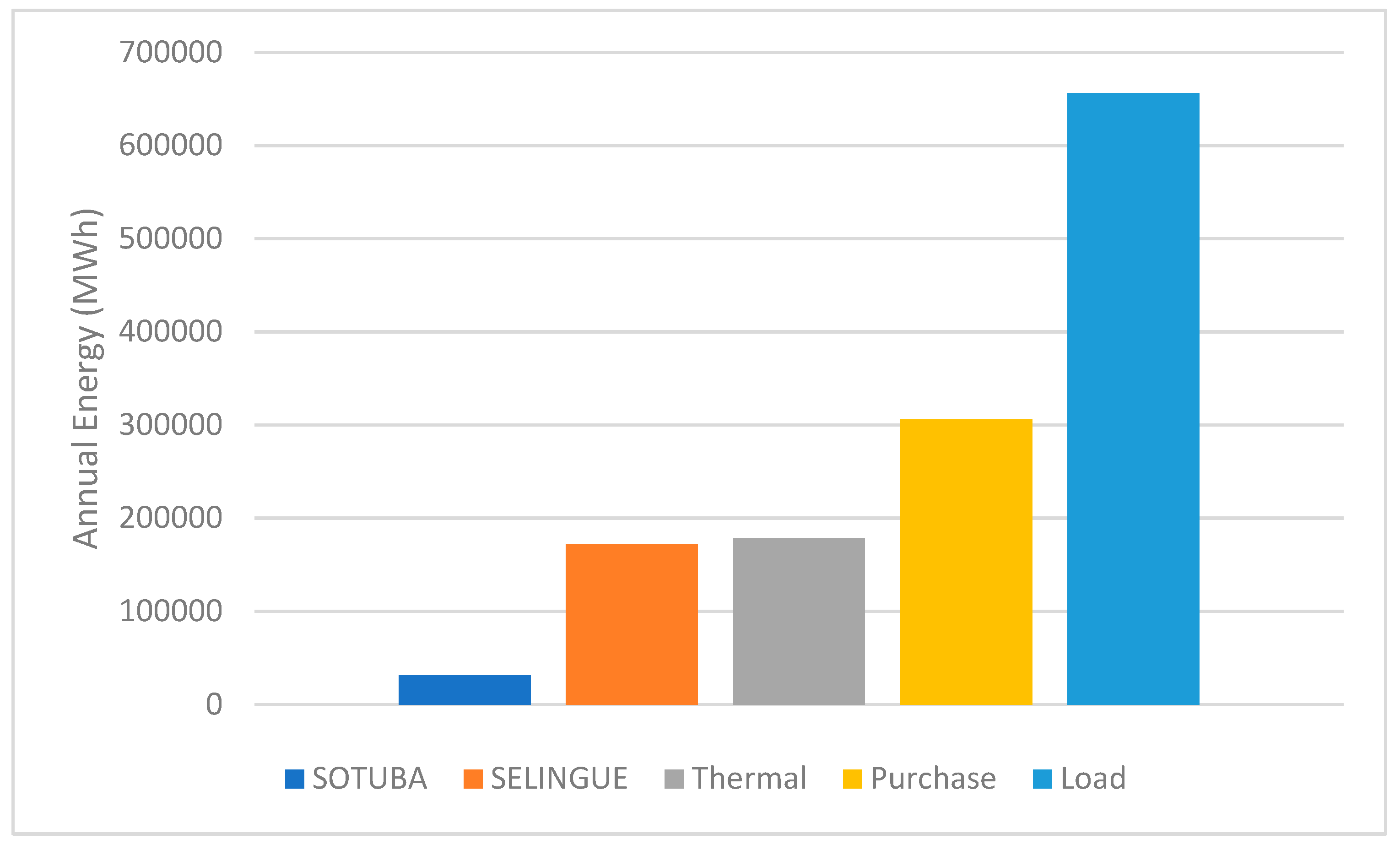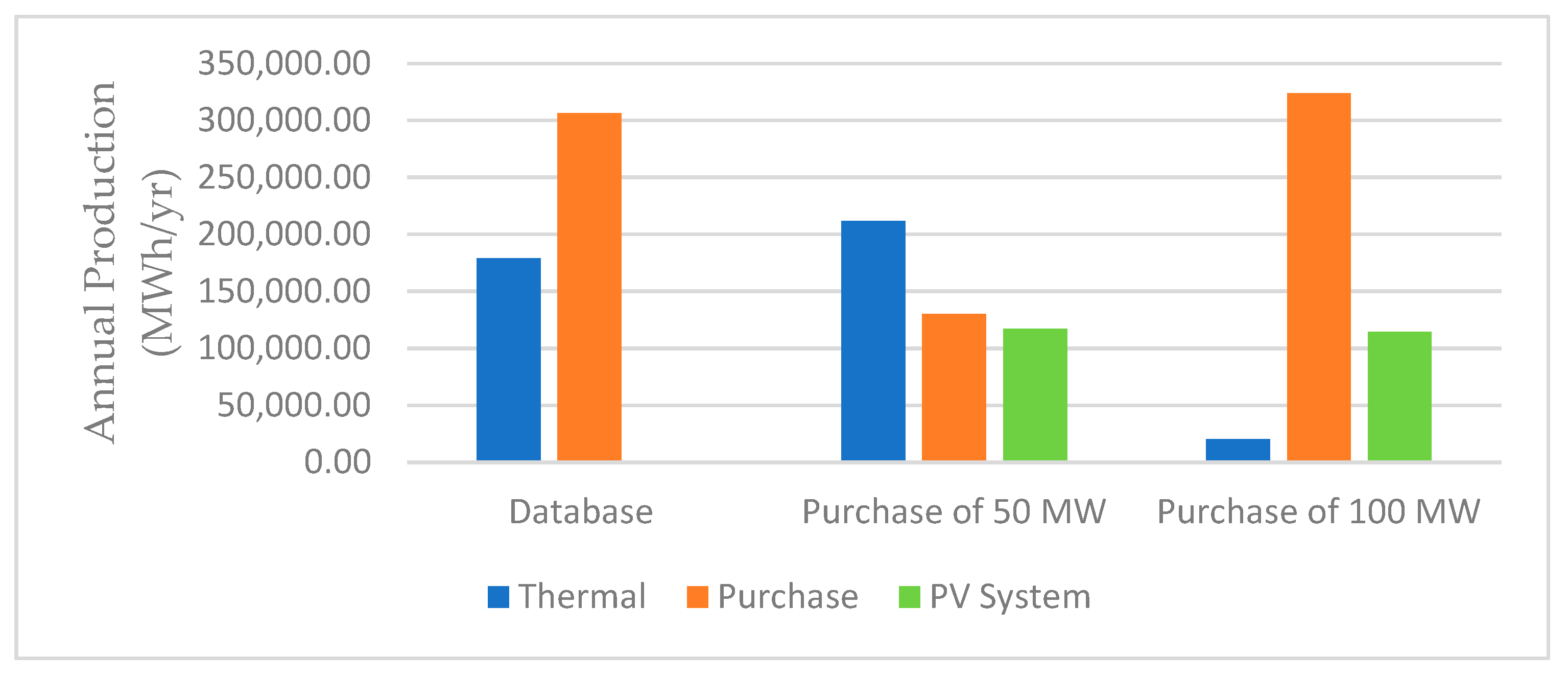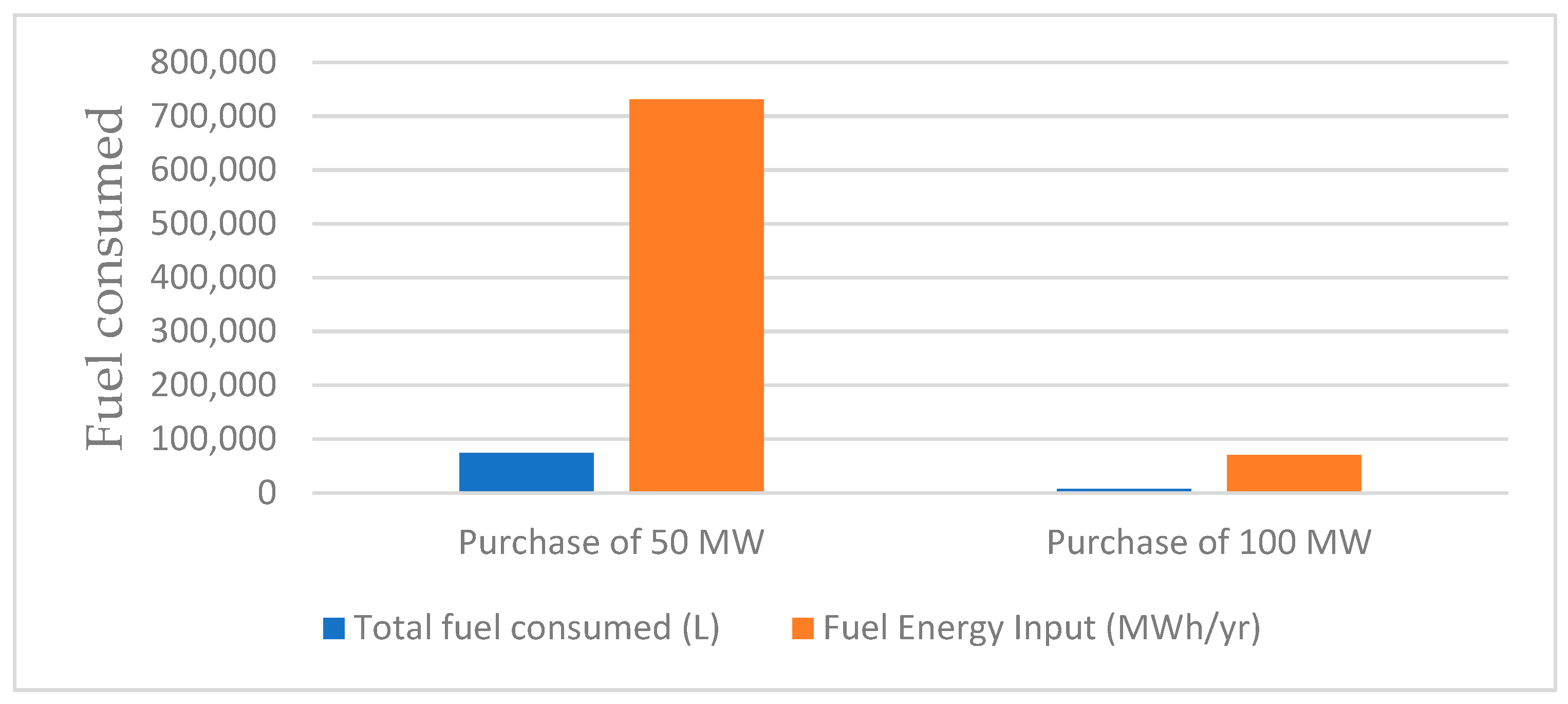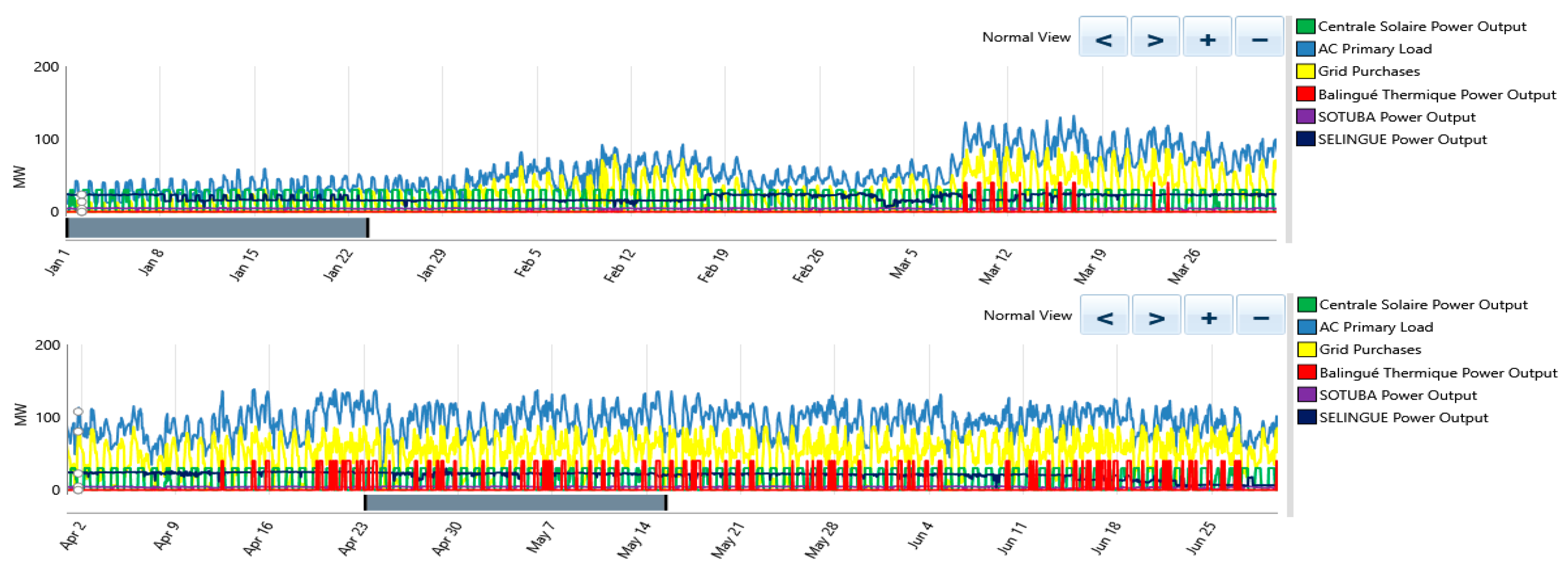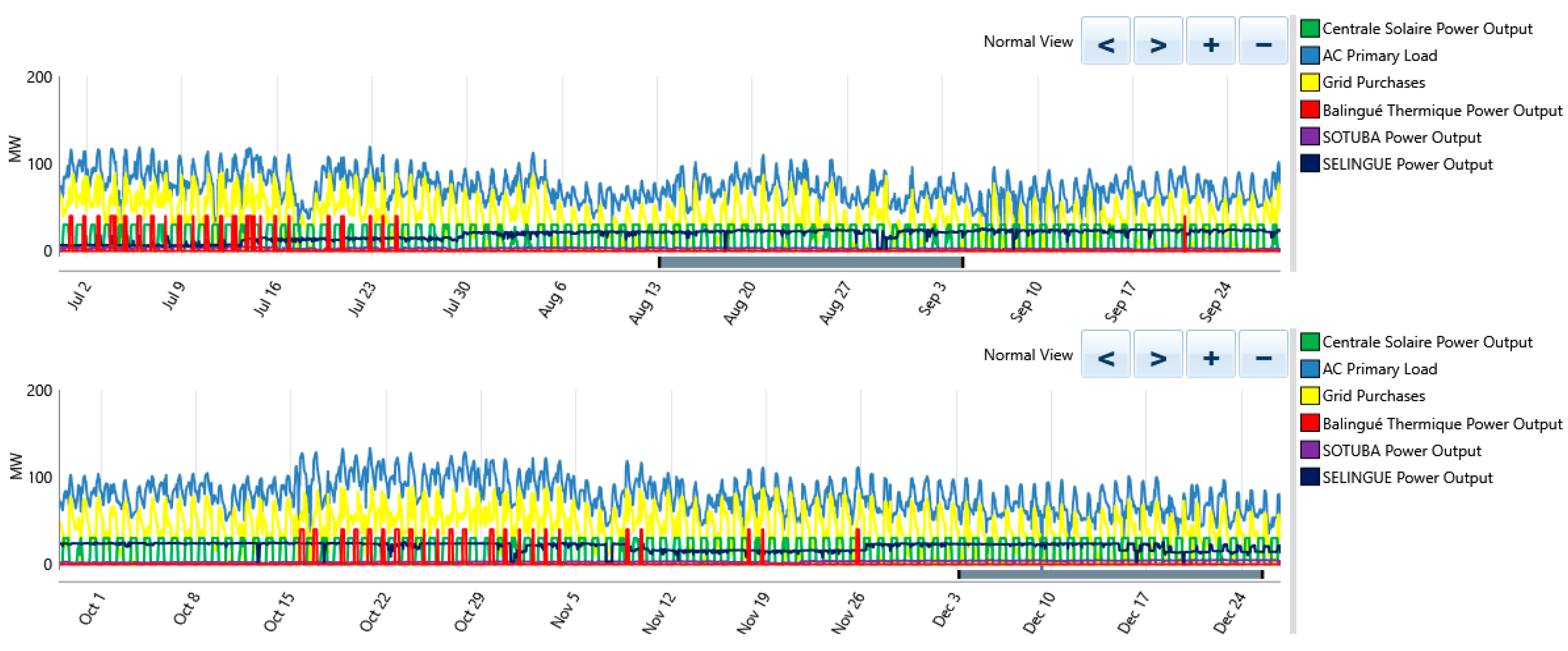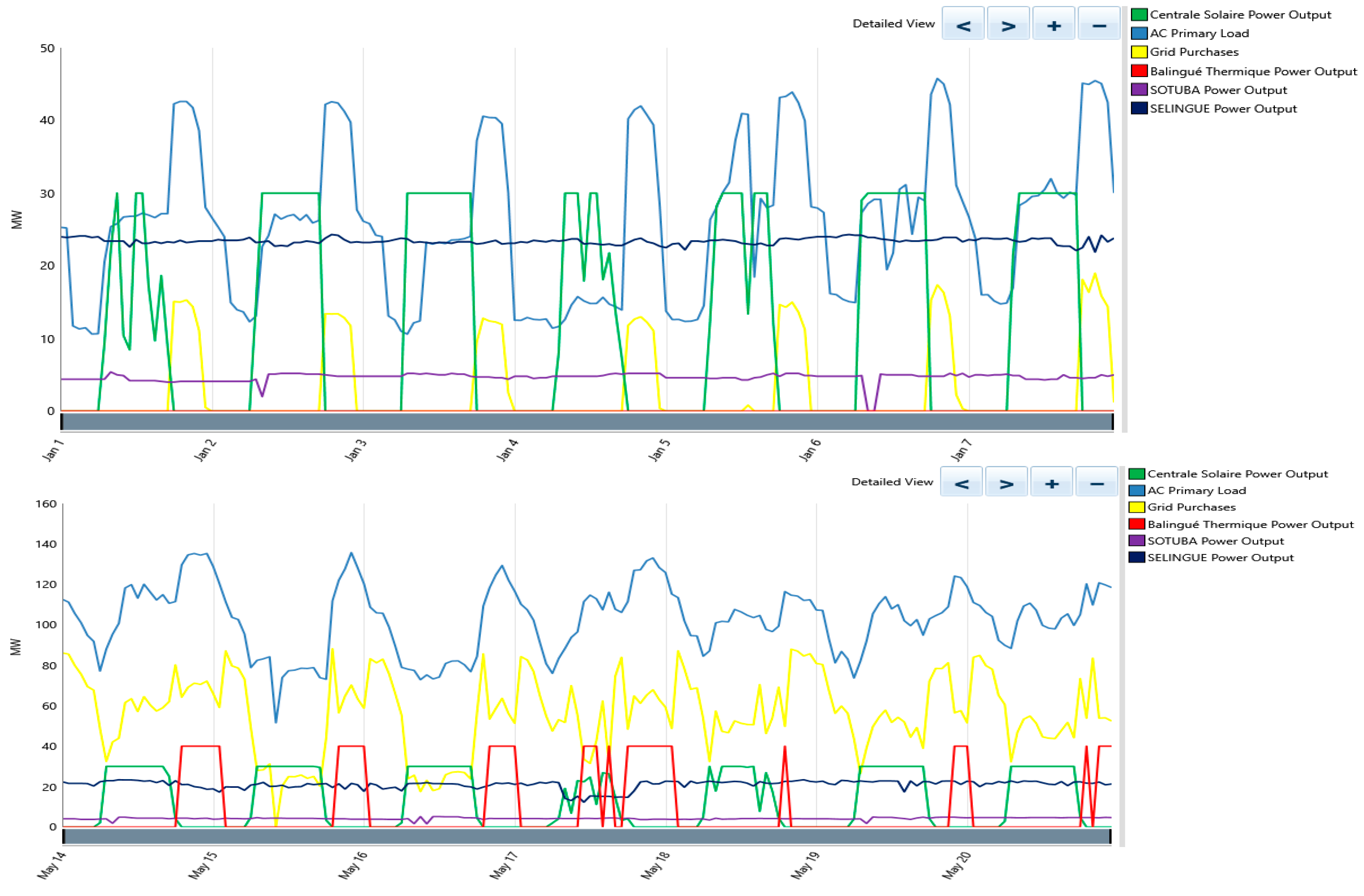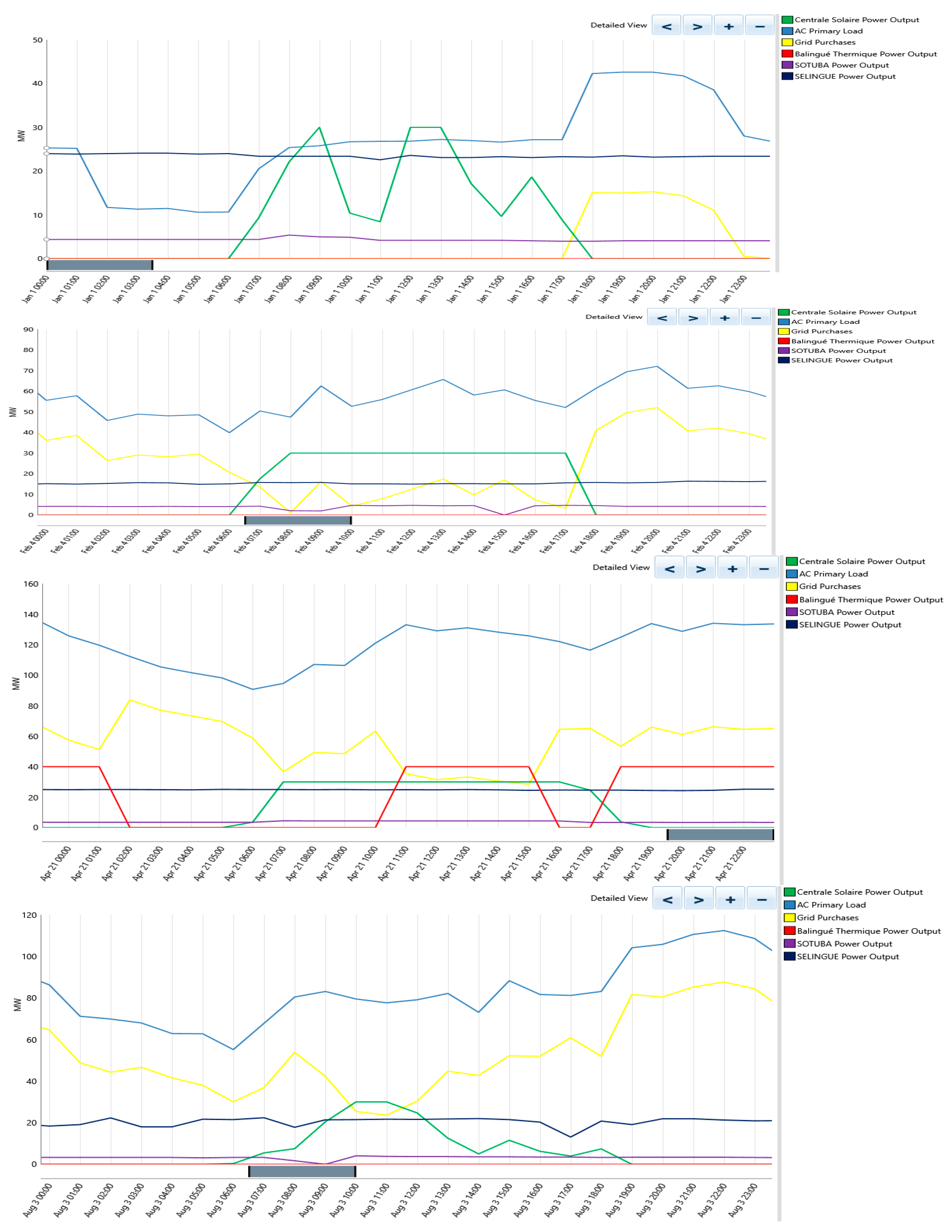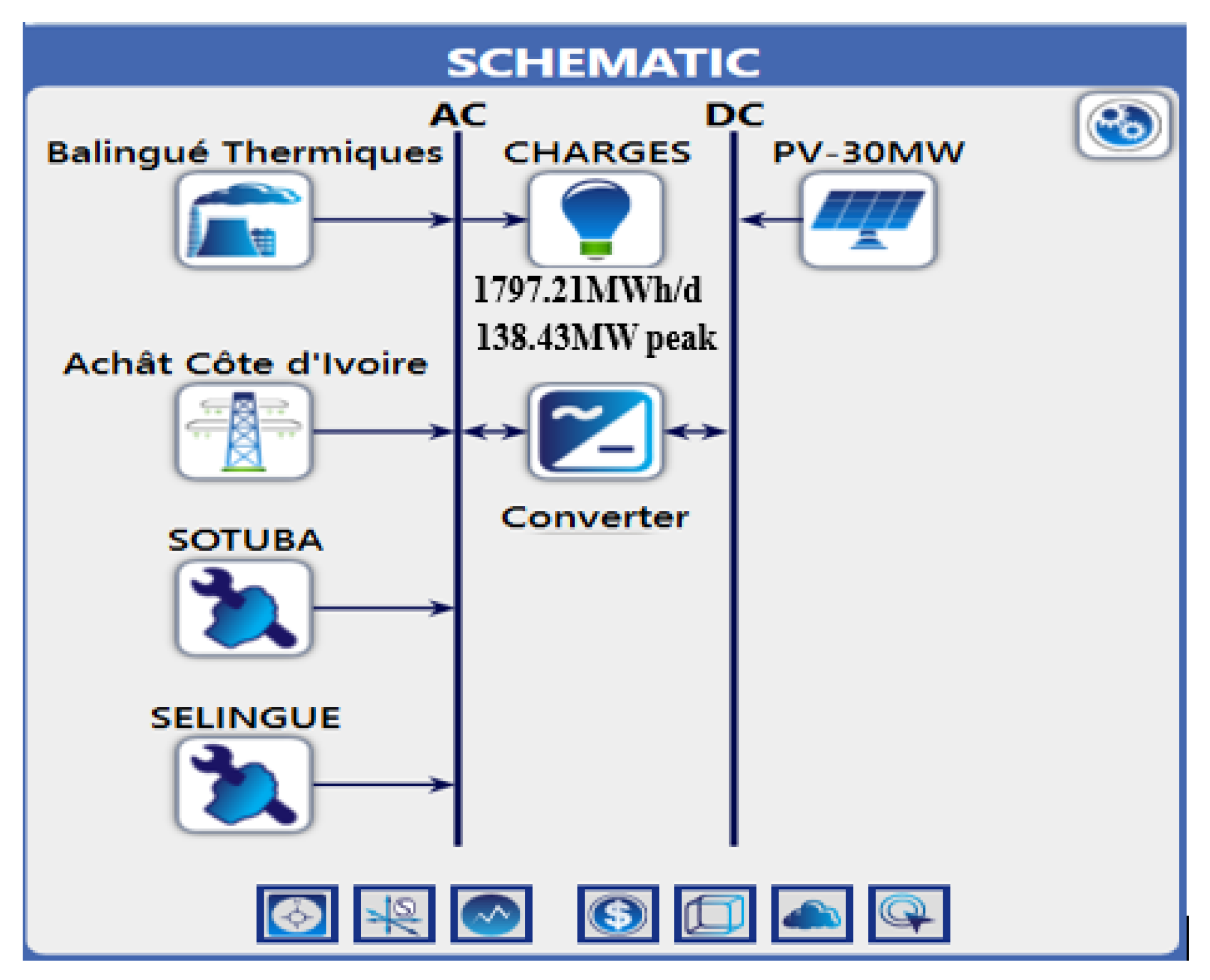1.1. General Introduction
The intense energy demand, as well as the instant consumptions, believe very quickly according to the seasons (winter and summer), the depletion and impact of fossil fuel deposits are becoming threatening [
1]. However, the production of energy in quantity and quality is a challenge of great importance. Dependence on fossil fuels as a primary energy source will lead to the depletion of fuels, environmental pollution, and negative impacts on human health [
1].
Figure 1 illustrates the evolution of fuel consumed for power generation from 2000 to 2014 [
2]. Today, faced with the adverse consequences of climate change, it is essential to maintain the global temperature below 2 °C, a maximum increase of only 1.5 °C [
3]. For it, the implementation of photovoltaic-grid hybrid power plants for the production of electricity will reduce the level of CO
2 emissions, and contribute to increasing revenues [
4]. To achieve these objectives and mitigate global warming, the use of renewable energies, which is an abundant resource accessible to all, is a sustainable solution. Therefore, many countries have begun to include solar energy programs in their planning to support sustainable development and environmental protection [
5,
6,
7,
8]. Between 1998 and 2008, the average annual generation of solar and wind sources rose by 29.6% and 29.4%, respectively [
9]. An analytical study carried out to evaluate different renewable energy sources in Saudi Arabia has shown that photovoltaic (PV) energy, concentrated solar energy, and wind power are, respectively, the most efficient renewable energies [
10]. The global capacity of integrated photovoltaic systems in 2016 was 106 GW from the European Union, 77.4 GW from China, 42.8 GW from Japan, and 40.9 GW from the United States of America [
11,
12]. In 2017, this capacity was increased to 131.1 GW in China, 108 GW in the European Union, 51 GW in the United States of America, and 49 GW in Japan [
13].
The investment costs of photovoltaic (PV) technology are now near the lowest cost level, and the additional reduction can be achieved by discovering new raw products or by developing a cheaper materials manufacturing technology [
14]. The leveled cost of electricity (LCOE) of PV panels with an installation size of 1 kW to 6 kW, under Italian conditions, was between 0.10 and 0.11/kWh, which is considered competitive with other green electricity technologies [
15]. The amount of electricity produced by the PV modules depends mainly on the composition, type of the module, the combined effect of the installation, and the dominant natural factors [
16]. Concerning the energy efficiency ratio of the photovoltaic technology, single-crystalline Si and multi-crystalline Si systems can provide a >90% net-to-gross energy return ratio, even when deployed in non-optimal locations, according to Leccisi et al. [
17]. However, because of the photovoltaic module heating, its energy production decreases, affecting the total energy production of the PV system [
18,
19].
Based on the global distribution map of annual solar radiation, the average yearly amount of PV energy that can be generated is between 640–2400 kWh/m
2 depending on the different geographical areas. In Mali, this is between 2100 to 2300 kWh/m
2 (see
Figure 2) [
20]. In view of this, the potential of solar energy available to Mali, and the constant increase in the operating cost of thermal power stations, in 2006, the government of Mali adopted the renewable energy development strategy, whose primary objective is to sustainably increase the contribution of renewable energies in the overall energy balance of the country, from less than 1% in 2002 to 15% in 2020 [
21]. The interconnected grid of EDM-SA (or Mali’s national electricity grid) has various production plants, basically divided between three technologies of the source of electrical energy: Thermal, hydroelectric (including purchases of hydroelectricity, and excluding other renewables), and regional interconnection power grids (Ivory Coast) [
21]. In 2013, the total installed capacity of the national grid was 424.26 MW, of which 39.42% was for the clean structures (hydroelectric and thermal unit) of the EDM-SA and 60.58% was for the purchase of energy (hydroelectric and thermal unit) and regional interconnection (Ivory Coast). Facing these difficulties related to the energy production, the objectives fixed by the government of Mali concerning of renewable energies connected at the grid must pass from 6.3 MW in 2010 to 150.7 MW in 2020 and 201.8 MW in 2030 [
21].
It is in this context that we will address “hybrid systems optimization: Application to hybrid systems photovoltaic connected to grid”. The objective is to allow better management of these hybrid systems and optimize the production of thermal energy according to the availability of solar productions.
Several works have been brought on PV solar plants installed in the world. A study on the performance analysis of a solar power plant connected to the 171.36 kW grid on the island of Crete in 2002 was done by Kymakis et al. in 2009 [
22]. An evaluation of 13 different photovoltaic technologies in two localities (Nicosia, Cyprus and Stuttgart, Germany), all connected to the grid with a rated power of 1 kW was led by Makrides et al. in 2010 [
23]. A study by V. Sharma et al. in 2013 focused on evaluating the performance of different rows of PV technologies consisting of polycrystalline silicon, thin film, and amorphous silicon at the Solar Energy Center in India [
24]. The performance of a PV power plant connected to the network using the various methods was studied by Hassan et al. in 2014 [
25]. Yang et al., in 2015, analyzed the reliability of a single-phase converter with reactive power injection at night by considering mission profiles [
26]. A new approach to reliability was proposed by Huai et al. in 2016 [
27]. Frede et al., in 2017, discussed the reliability of renewable energy systems [
28]. A design study and selection of reliable converters for photovoltaic applications connected to the grid was carried out by Victor et al. in 2018 [
29]. Sangwongwanich et al., in 2018, conducted an approach of the power control flexibility of solar systems [
30]. A study on an autonomous photovoltaic system in an urban area of Mexico was led by Alberto et al. in 2018 [
31]. Research on the reconfiguration of a multi-state converter was carried out by Chen et al. in 2018 [
32].
Most of the studies on hybrid systems photovoltaic connected to the grid have been based on solar power plant performance evaluation, reliability converter, and maximization of installed PV power output. However, renewable sources are intermittent sources, and managing its productions according to their availability remains a significant challenge.
This work will be focused on the optimization of thermal energy production, which is an undesirable source according to the availability of solar power generation, and on the other hand, allowing Mali’s electricity supplier (EDM-SA Energy of Mali) to have a reliable estimate of purchases from interconnection with a neighboring country (Ivory Coast).
1.2. Characteristics of PV System
Among the many environmental factors that affect the operating characteristics of a photovoltaic cell and its energy production, the solar irradiation G measured in W/m
2 and the temperature
T measured in degrees Celsius (°C) are the two main factors [
33].
The source of photocurrent Iph is expressed as follows in the following equation [
34]; it depends on both irradiance and temperature.
where
is the rated short-circuit current,
is the current temperature coefficient,
is the rated solar radiation, which is distinctively 1000 W/m
2, and
is the rated cell temperature, which is distinctively 25 °C.
The values of and can be determined from the datasheet of cells or commercial PV panels.
Also, the current
and the voltage
of the diode are expressed by an exponential relationship and are represented by Equations (2) and (3) [
34].
where
is the saturation diode current,
is the ideality constant of the diode,
is the voltage of the diode, and
is the thermal voltage of the semiconductor junction.
The saturation current of the diode depends on the temperature and can be defined as:
where
is the open-circuit nominal voltage, and
is the temperature coefficient of the voltage.
The diode voltage
is the same as the PV voltage
of an ideal model. The thermal voltage
depends on temperature
and is established in Equation (4) [
34].
where
is the Boltzmann constant (
),
is the electronic charge (1.60217662 × 10
−19 C), and
is the number of PV cells in series.
The intensity of the current at the output of the PV,
, and its power
, are given respectively by Equations (5) and (6) [
35]:
, are respectively the series and parallel resistors of the PV source. Where the current is defined in Equation (1) and the current of the diode in Equation (2).
From the equation of the current given in Equation (5), it can be concluded that the output current of the PV depends on the solar irradiation and temperature ambient .
According to the variation of the solar irradiation and the temperature, Equation (5) can be used to determine the current and power characteristic curve of a PV for a given voltage
Figure 3 [
34].
Several factors affect the efficiency of a PV cell. Among these factors, the two significant factors are solar irradiation and temperature. The efficiency indicated on the datasheets of the modules is the efficiency in the standard conditions (solar irradiation G = 1000 W/m2 and temperature T = 25 °C AM = 1.5).
The voltage/current characteristics of a photovoltaic generator under different conditions of variation of solar irradiation and ambient temperature are illustrated in
Figure 4 and
Figure 5 [
34].
When irradiation and temperature vary, the I-V curve will also change, as shown in
Figure 4. Solar irradiation is directly proportional to current characteristics; if it increases, the short circuit current and the maximum power point (MPP) current also increase. Conversely, the temperature is inversely proportional to the characteristics of the voltage. When the temperature increases, the voltage open circuit (VOC) and the MPP voltage decrease. Therefore, a cell will produce the most power when the intensity of sunlight is high, but when the temperature is low (
Figure 3). However, these types of environmental conditions are not common because the higher-intensity light striking an object tends to increase its heat at the same time.
Variety studies have confirmed these hypotheses. Zsiborács et al. [
36] and Chandrasekar et al. [
37] have shown that in crystalline solar modules, a 1 °C temperature increase will generally result in a 0.5% reduction efficiency. According to Skoplaki [
18], the efficiency the crystalline modules can have a loss of 0.3% to 0.5% when the temperature increases by 1 °C. Krauter [
19] establishes that the energy–temperature relationship varies between 0.4% and 0.5%/°C for the same technology. In the case of unglazed glazing of a photovoltaic, the decrease in electrical efficiency is linear and equal to 0.015 when the temperature was between 25 °C and 34 °C and the solar radiation increased from 100 to 1000 W/m
2 [
38]. According, Zsiborács et al. [
39], with silicon photovoltaic cells, a decrease of 1 °C in temperature will result in an average increase of 0.27% in efficiency of energy production.
The rest of the paper is structured follows: In
Section 2, materials and methods are discussed; in this section, an overview of the solar resources in Mali and how coupled a photovoltaic system to an electricity grid is discussed in
Section 2.1 and
Section 2.2; an application case is processed in
Section 2.3. The results and discussions on the best optimization strategy are presented in
Section 3, and a conclusion in
Section 4.
